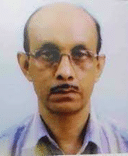Get the App
For Doctors
Login/Sign-up
Last Updated: Aug 29, 2019
BookMark
Report
Cervical Spondylosis - In Depth Of It!
Dr. Swarup Kumar GhoshHomeopathy Doctor • 47 Years Exp.MF Homeo (London), DHMS (Diploma in Homeopathic Medicine and Surgery), Biochemistry M.D.( PG) (Kol), CMS Ed, Affilied by UGC & MCI., Electro - Homoeopathy Pledge (Certifict No.11244)., Electro Homoeopathy Certficate., BEMS; MDEH(MP)., Ph..D. (Zoology).BWN.1980, W.H.O Member, & INDIA RED CROSS SOCIETY, "SEHAK"
Cervical Spondylosis
Definition-
- Cervical spondylosis is a general term for age-related wear and tear affecting the spinal disks in your neck. As the disks dehydrate and shrink, signs of osteoarthritis develop, including bony projections along the edges of bones (bone spurs).
- Cervical spondylosis is very common and worsens with age. More than 85 percent of people older than age 60 are affected by cervical spondylosis.
Symptoms-
- For most people, cervical spondylosis causes no symptoms. When symptoms do occur, they typically include pain and stiffness in the neck.
- Sometimes, cervical spondylosis results in a narrowing of the space needed by the spinal cord and the nerve roots that pass through the spine to the rest of your body. If the spinal cord or nerve roots become pinched, you might experience:
- Tingling, numbness, and weakness in your arms, hands, legs or feet
- Lack of coordination and difficulty walking
- Loss of bladder or bowel contr
Causes-
- As you age, the bones and cartilage that make up your backbone and neck gradually develop wear and tear. These changes can include:
- Dehydrated disks. Disks act as cushions between the vertebrae of your spine. By the age of 40, most people's spinal disks begin drying out and shrinking, which allows more bone-on-bone contact between the vertebrae.
- Herniated disks. Age also affects the exterior of your spinal disks. Cracks often appear, leading to bulging (herniated) disks — which sometimes can press on the spinal cord and nerve roots.
- Bone spurs. Disk degeneration often results in the spine producing extra amounts of bone in a misguided effort to strengthen the spine. These bone spurs can sometimes pinch the spinal cord and nerve roots.
- Stiff ligaments. Ligaments are cords of tissue that connect bone to bone. Spinal ligaments can stiffen with age, making your neckless flexible.
Risk factors-
- Risk factors for cervical spondylosis include:
- Age. Cervical spondylosis is a normal part of aging.
- Occupation. Jobs that involve repetitive neck motions, awkward positioning or a lot of overhead work put extra stress on your neck.
- Neck injuries. Previous neck injuries appear to increase the risk of cervical spondylosis.
- Genetic factors. Some individuals in certain families will experience more of these changes over time, while others will not.
- Smoking. Smoking has been linked to increased neck pain.
Complications-
If your spinal cord or nerve roots become severely compressed as a result of cervical spondylosis, the damage can be permanent.
Homeopathic remedies for cervical spondylosis-
- Conium
- Kalmia
- Gelsemium
- Kali carb
- Rhustox
- Ruta
- Bellis perennis
In case you have a concern or query you can always consult a specialist & get answers to your questions!



+1.svg)
